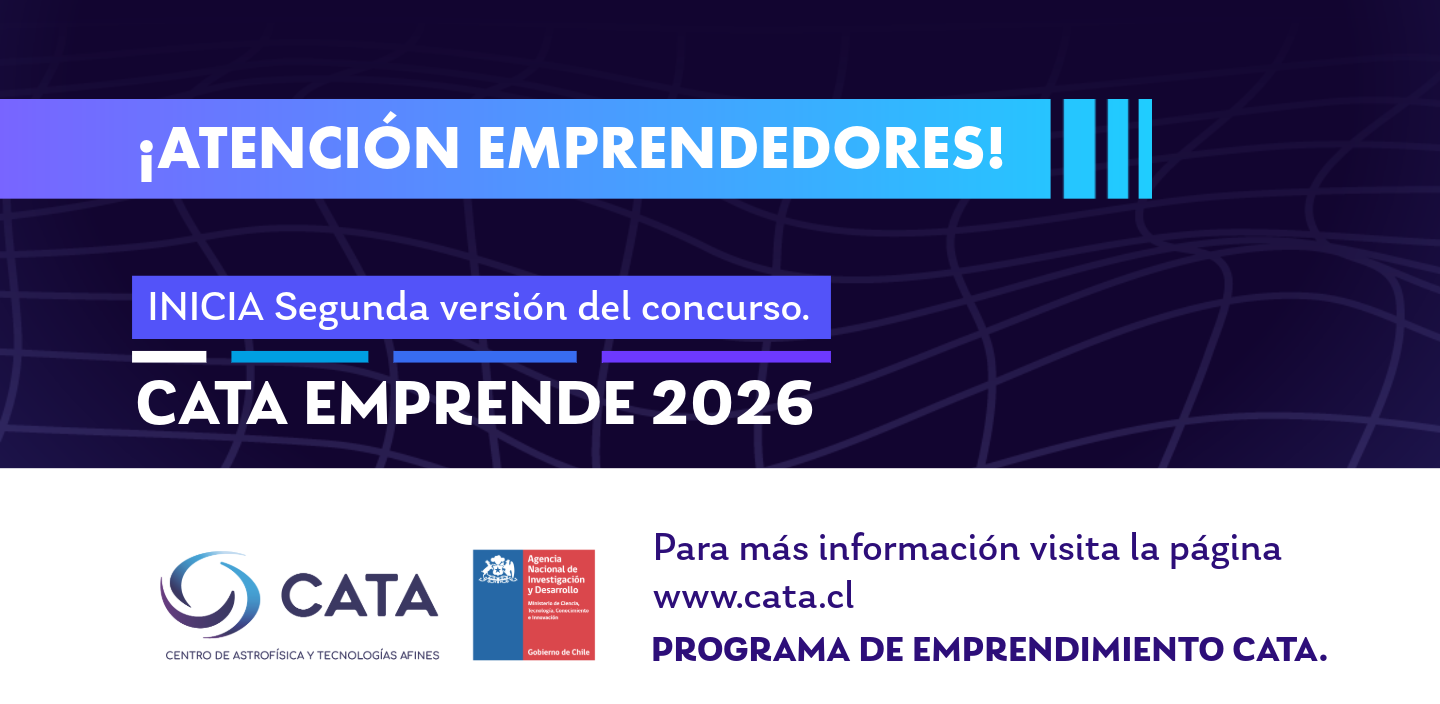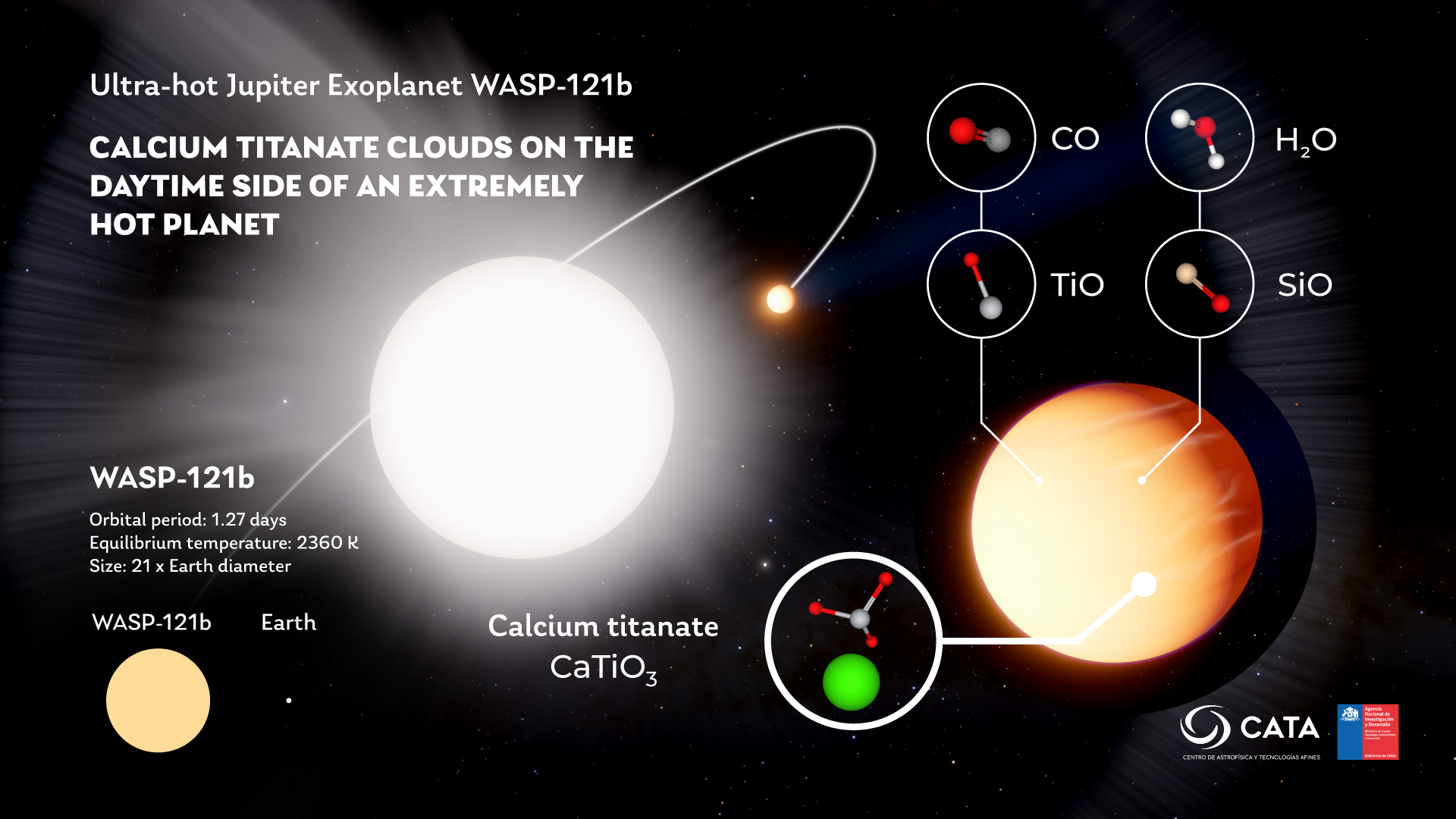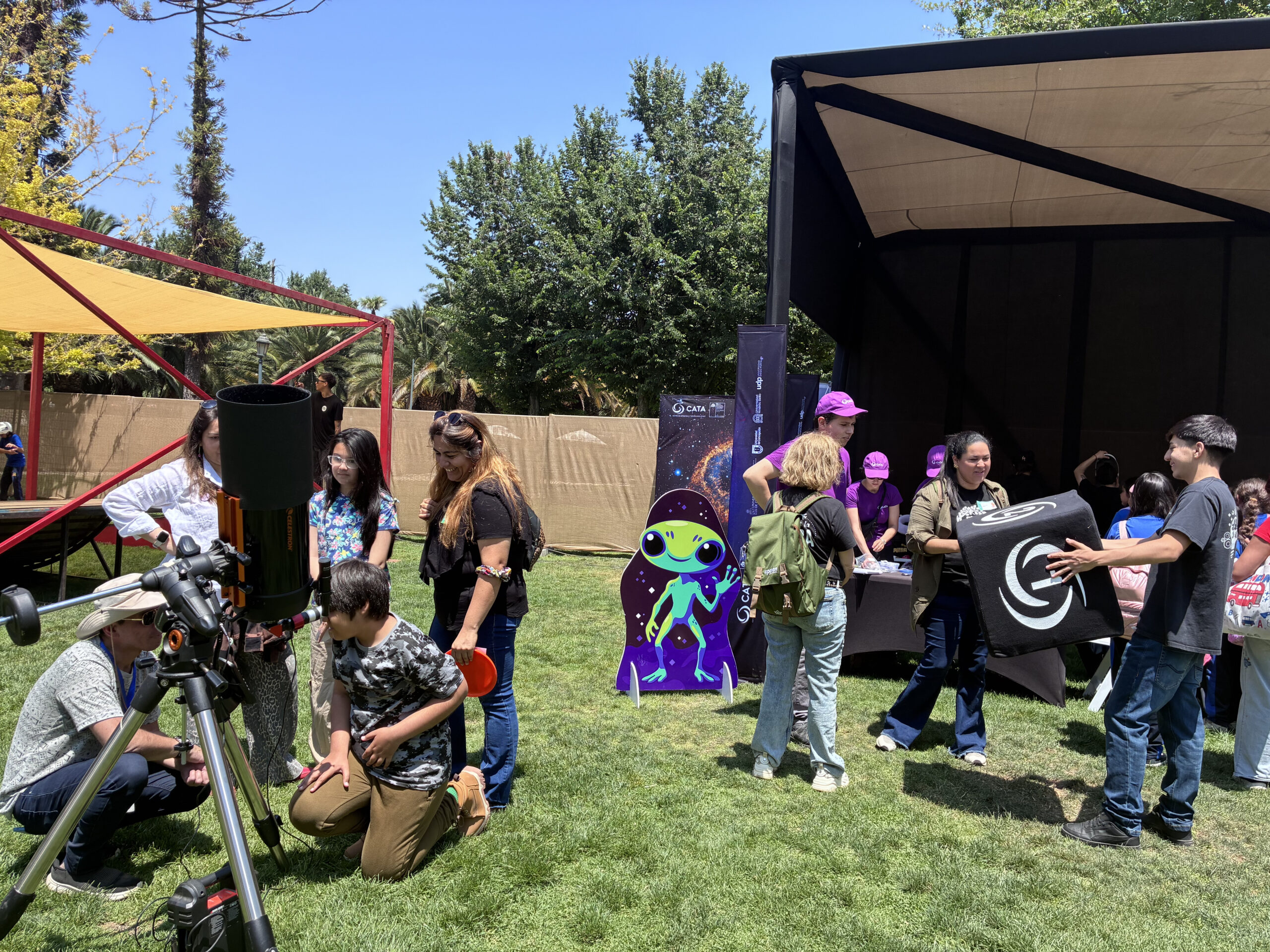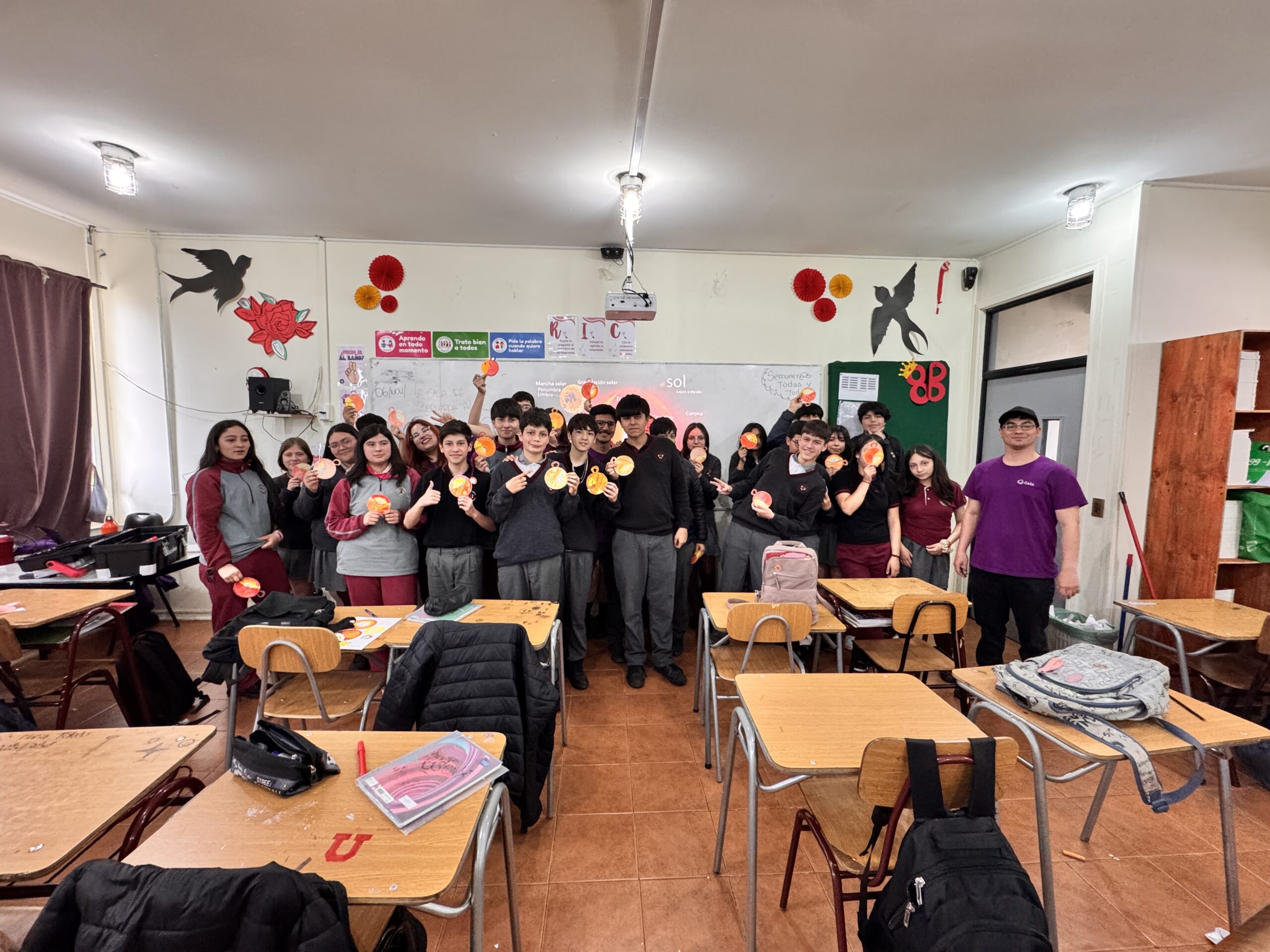
CATA at Congreso Futuro 2025: astronomers and engineers share their research and lines of development
Within the framework of Congreso Futuro 2025, several astronomers and professionals associated with the Center for Astrophysics and Related Technologies (CATA) presented their work and research at one of the most important scientific dissemination events in the country, exhibiting in the Metropolitan Region, as well as in Antofagasta and Atacama.
Congreso Futuro 2025, one of the most important events of knowledge and scientific dissemination in Latin America, counted with the outstanding participation of several astronomers and associates of the Center for Astrophysics and Related Technologies (CATA). Each shared their experience and knowledge in key areas of science, astronomy and technology.
On the first day, Monday, January 13, Francisco Förster, astronomer at the University of Chile, Associate Researcher at CATA and director of the Millennium Institute of Astrophysics (MAS) presented his talk “Technologies to unveil the secrets of the universe”. During his presentation, he highlighted the challenges and edges of artificial intelligence (AI) in astronomy and how this tool has contributed to discoveries in the field, such as the Vera Rubin observatory and the ALeRCE project. He also emphasized the need to take care of the Chilean skies in order to maintain Chile as a world astronomical leader.
“Chile hosts the best telescopes in the world. This has to be taken care of, it is not free. We have to actively take care of our skies. ALeRCE is one of the first astronomical artificial intelligence agents in the world doing this science and it puts us in a privileged position to make these great discoveries. We have to be in a position where we are not just users of artificial intelligence,” Francisco commented in his presentation.
On Tuesday, January 14, on the following day, Mónica Rubio, a prominent Chilean astronomer from the University of Chile and Associate Researcher at the Center, was part of the III Summit of Future Commissions at the National Congress in Santiago. Her talk was marked in Panel 1: “Present and future challenges in astronomy: fostering international collaboration and scientific progress”, where she reflected on Chile’s role as a world astronomical power and critical issues such as legislation to protect Chilean skies and opportunities to develop a related industry. Topics discussed included how parliaments can collaborate to ensure that advances in space exploration and astronomical observation benefit all of humanity.
During the same day, but this time at the CEINA Center in Santiago, Cristina Dorador, microbial ecologist at the University of Antofagasta, Associate Researcher at CATA and PhD in Natural Sciences, participated in a panel with Karina Gómez, researcher at Startup NIDO and Virginia Garretón, head of advisors at the Ministry of Science, Technology, Knowledge and Innovation, where she highlighted the importance of biodiversity in innovative applications such as new materials.
Subsequently, the academic presented a talk in Copiapó on microorganisms of salt flats, highlighting the need to protect these extreme ecosystems. Finally, she participated in a book signing with other researchers, promoting the work “Amor microbiano” (Microbial Love), of which she is the author.
In parallel, Millarca Valenzuela, geologist of the Universidad Católica del Norte, expert in meteorites and Associate Researcher of our institution, addressed the flow of extraterrestrial material to Earth. In her talk, she explained the different types of material, such as micrometeorites and meteorites, and the valuable information they provide about the early processes of formation of the solar system. He also highlighted the work done with the Andean Fripom camera network and the importance of expeditions to search for newly arrived material.
Finally, Bárbara Rojas-Ayala, astrophysicist of the Universidad de Tarapacá and Associate Researcher at CATA, was at the CEINA Cultural Center participating in the ANID discussion entitled “Colonization of Space: Science, Technology and the Future of Humanity”, where she shared her perspective on how advances in space technology can influence the future of humanity.
Linking with the public and CATA’s work
In addition to the presentation of our researchers, CATA was present throughout the week at the CEINA Center with a stand, moderated by engineers, where they presented the different technologies developed by CATA in the different laboratories associated with the Center, presenting themselves from the academy with a focus and transfer to the industry. This was able to demonstrate that the knowledge used by astronomers and associated engineers who focus on astronomical instrumentation, can provide support in the various problems that society and industry may have, providing solutions according to each need.
Among the most outstanding technologies, developed at the Millimeter Wave Laboratory (MWL) of the University of Chile, were the Gradian project, a sensor based on optical spectroscopy that allows the identification of different types of grains; Magic, a communication system using magnetic induction that allows communication with a coverage of hundreds of meters underground and/or through solid material, and Susan, a submersible sensor developed in conjunction with the COPAS Coastal Oceanographic research center that allows analysis of the color of the sea by means of spectroscopy for the detection of red tide.
In this way, the stand served to connect with the public present through the visualization of these projects. In addition, a daily raffle of four copies of the CATA book “Universe: Science and Fiction”, by authors María Teresa Ruiz and Margarita Schultz, was held through social networks.
Fernanda Mesa, technology manager of the Technology Transfer area, pointed out that these instances of communication with the public allow us to show the work carried out by an astronomical center such as ours. “It is an opportunity to deliver added value to the research work developed by CATA astronomers and astronomers together with the applied technology that our engineers execute in the laboratories”, said the professional.
The participation of CATA members and associates in Congreso Futuro 2025 demonstrates their commitment to the development of innovative solutions and their contribution to the advancement of scientific knowledge. Each exhibition and activity highlights the importance of Chile as a leader in astronomy and related sciences, as well as the positive impact that these disciplines can have on society.
Recent news
-
 Publicado el: 12/12/2025Call for applications for the CATA Emprende 2026 program now open
Publicado el: 12/12/2025Call for applications for the CATA Emprende 2026 program now open -
 Publicado el: 09/12/2025CATA researchers detect titanate clouds on ultra-hot exoplanet
Publicado el: 09/12/2025CATA researchers detect titanate clouds on ultra-hot exoplanet -
 Publicado el: 05/12/2025CATA launches Applied Research Fund 2026
Publicado el: 05/12/2025CATA launches Applied Research Fund 2026 -
 Publicado el: 01/12/2025The astronomical experience was part of the 4th Ladera Sur Festival.
Publicado el: 01/12/2025The astronomical experience was part of the 4th Ladera Sur Festival. -
 Publicado el: 25/11/2025Students from Angol held an astronomy workshop with CATA
Publicado el: 25/11/2025Students from Angol held an astronomy workshop with CATA
Categories list
- Acknowledgments 21
- Astrobiology 6
- AstroCluster 1
- Black holes 18
- Corporativo 57
- Cosmology 5
- Descubrimientos 23
- Disclosure 73
- Exoplanets 14
- Extension 6
- Galaxies 21
- Galaxies formation 5
- Inter y Transdisciplina 4
- Local Universe 16
- Publications 6
- Sin categorizar 34
- Solar System 21
- Stellar formation 8
- Technology 16
- Technology Transfer 18













